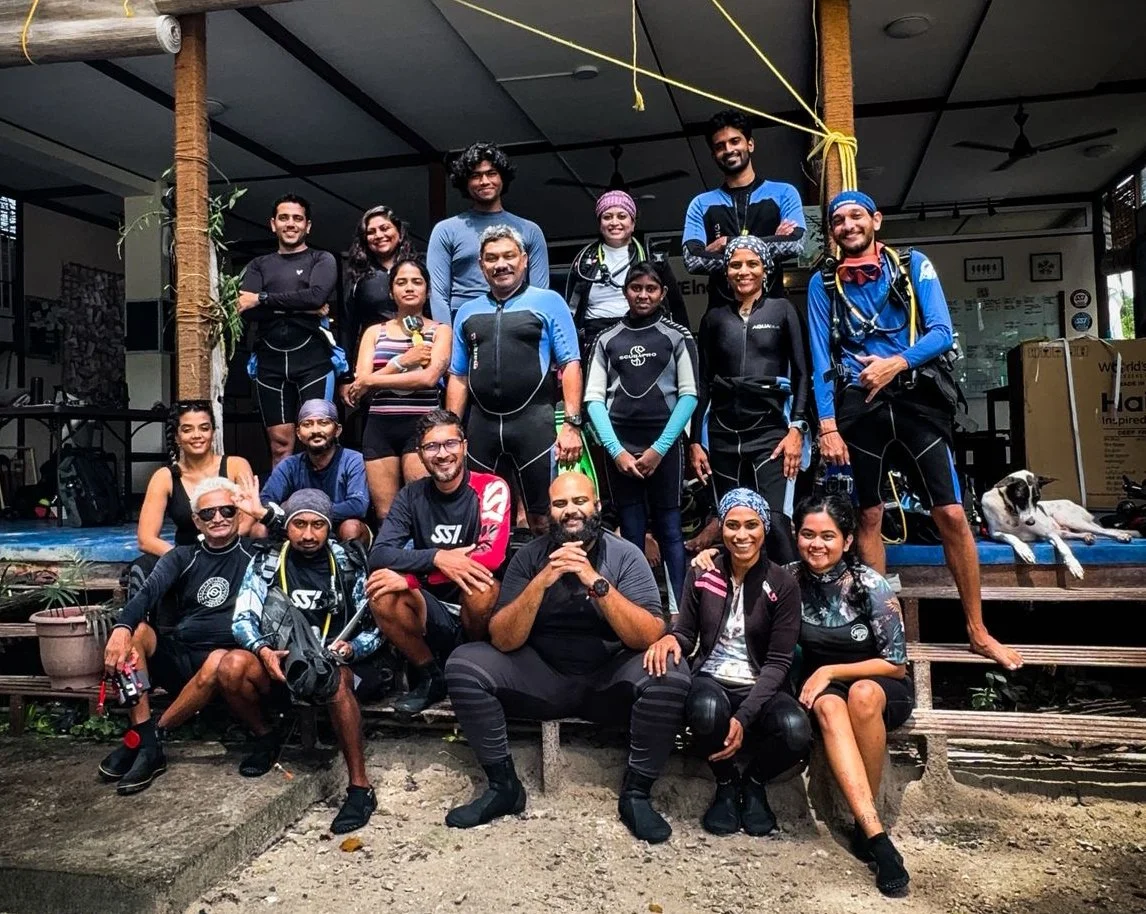DIVING WITH PURPOSE
My Experience as a Scientific Diver
I’ve got a compass strapped to my wrist, a reel of measuring tape in one hand, a slate and a pipe in the other, as I wade into Nemo Reef in Havelock, fully geared up for a dive. Beside me are my buddy — another student — and our instructor. We’re here to learn how to collect data underwater and make sense of what’s changing beneath the surface, in an area that witnessed a mass bleaching event just a year ago.
How I got here
I completed my PADI Open Water certification in 2015, but it’s only in recent years that I’ve begun diving more consistently and feeling truly committed to it. My journey began by wrestling with the fundamentals; buoyancy, control, comfort — just learning how to feel at home underwater. Eventually, that gave way to wonder: I started seeing the reef like a picture-perfect gallery, gliding through rays of light and shoals of fish, peeking under overhangs and admiring the life that moved around me as if I weren’t there at all.
Diving has always brought me an indescribable joy — like it couldn’t possibly get better. But that perspective shifted during an EarthCoLab Marine Ecology course in the Maldives, when I was asked to observe a single Pocillopora for 20 minutes at a depth of 5 metres. The more I looked, the more I saw - a whole world unfolding within this small space – I was hooked into finding out more about how this world worked. I wanted to go beyond the visuals of it, and understand the inner workings of a complex and fascinating system.
On my journey to look closer, I came across the Samudra Scientific Diver program, run by Marine Life of Andamans and Coastal Impact, and facilitated by Dive India in Havelock. It offered me another lens through which I could understand our impact on the sea. Before I knew it, I was one of ten people in the very first batch, transitioning from recreational diving to scientific diving, learning to dive with purpose.
What is scientific diving?
Scientific diving sits at the intersection of recreation and research, empowering divers to become field scientists and ecological storytellers. The data collected can directly support researchers, communities, and policymakers in understanding how ocean systems are changing. Prajakta Kuwalekar from Marine Life of Andamans felt the urgency of this work firsthand, after witnessing a mass bleaching event just last year that affected 80% of the coral in the Andamans — only to surface and realise no one was talking about it. Often this is the case: out of sight, out of mind, and this is what we are aiming to change.
Preparation
Before the course began, we were sent a comprehensive document that laid the foundation for what it means to be a scientific diver. It covered key techniques, introduced us to marine systems and coral reef biology, and included sections on buoyancy and underwater navigation. Packed with photos, videos, and additional reading materials, it’s a resource I know I’ll return to. Having this context ahead of time made everything we covered in person feel more familiar and meaningful.
On land
The ten of us who had gathered from various places in India came from all walks of life. We ranged in age across four decades, split evenly between women and men, each bringing a different background and story to the mix. We had amongst us, a biologist, ecologist, a commercial diver, engineers, photographers and artists. The time outside the water was spent at Dive India in focused learning sessions — covering theory, engaging in discussions, playing interactive games, and reviewing the data we collected.


